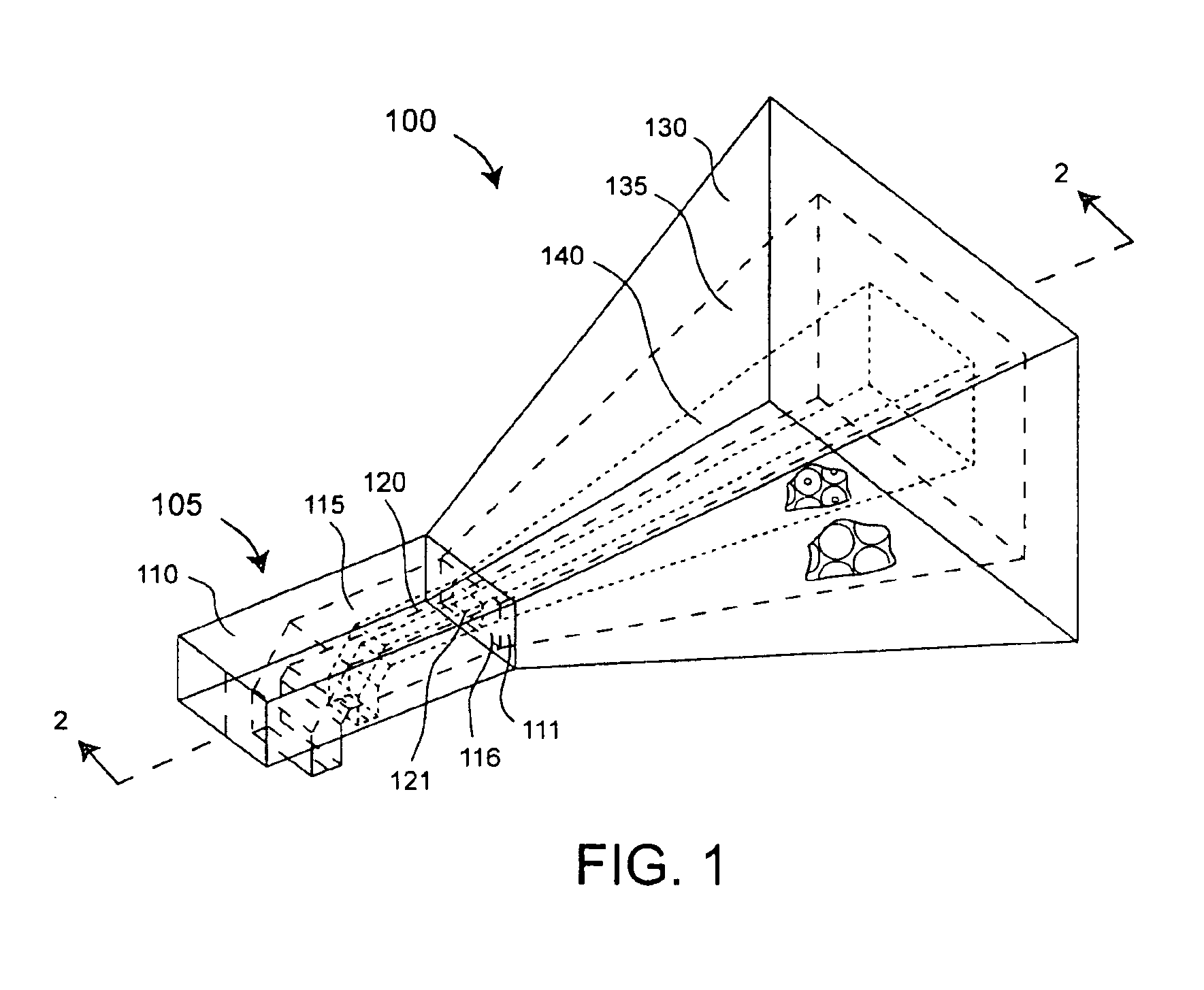FSS feeding network for a multi-band compact horn
a multi-band, compact horn technology, applied in the direction of horns, slot antennas, waveguide horns, etc., can solve the problems of multiple feed probes, limited operation frequency and bandwidth of conventional horns,
- Summary
- Abstract
- Description
- Claims
- Application Information
AI Technical Summary
Benefits of technology
Problems solved by technology
Method used
Image
Examples
Embodiment Construction
[0019]An embodiment of the present invention concerns a feed structure for use with a multi-band horn antenna. The feed structure includes a waveguide combiner network which can include a plurality of waveguides that are operatively coupled to antenna horns. For example, a waveguide can be provided for each of a plurality of coaxial horns. Further, a feed probe can be provided for each of the waveguides. Accordingly, the feed probes can be optimized for the horns with which they are used.
[0020]Frequency selective surfaces (FSS's), which are known in the art, can be selectively incorporated into walls of the waveguides such that the waveguides are reflective at selected frequencies and transparent at other selected frequencies. For instance, a particular waveguide can be reflective for RF signals generated by a feed probe associated with the waveguide, yet be transparent to RF signals generated by feed probes associated with other waveguides within the feed structure. Accordingly, th...
PUM
 Login to View More
Login to View More Abstract
Description
Claims
Application Information
 Login to View More
Login to View More - R&D
- Intellectual Property
- Life Sciences
- Materials
- Tech Scout
- Unparalleled Data Quality
- Higher Quality Content
- 60% Fewer Hallucinations
Browse by: Latest US Patents, China's latest patents, Technical Efficacy Thesaurus, Application Domain, Technology Topic, Popular Technical Reports.
© 2025 PatSnap. All rights reserved.Legal|Privacy policy|Modern Slavery Act Transparency Statement|Sitemap|About US| Contact US: help@patsnap.com



